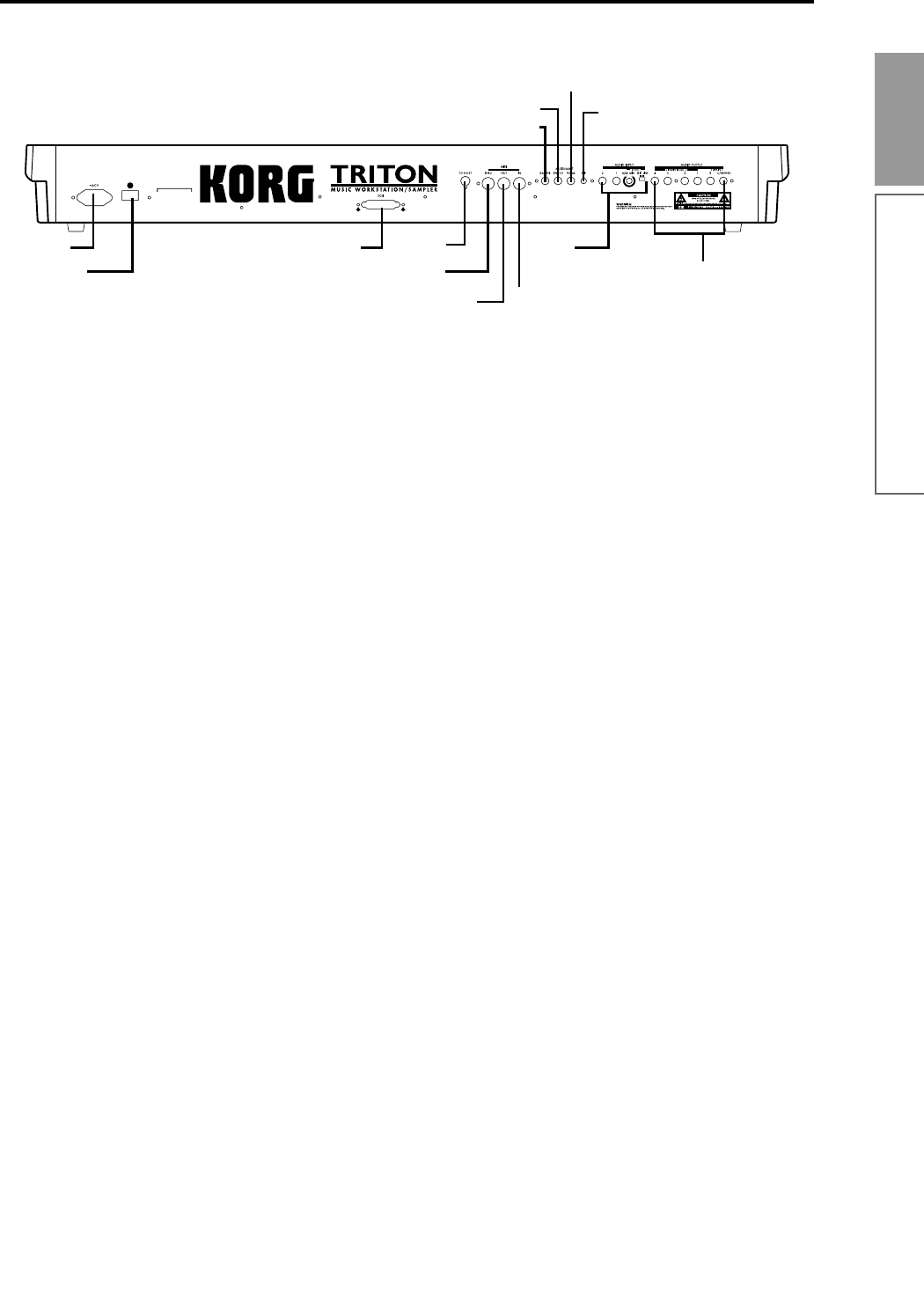
9
Introduction
9. ASSIGNABLE SWITCH jack
A separately sold on/off foot switch such as the
Korg PS-1 foot switch can be connected here
(
☞p.16).
Its function can be assigned in Global mode,
allowing you to use the foot switch as a modula-
tion controller, to select programs or combinations,
or to start/stop the sequencer (
☞p.125).
10. ASSIGNABLE PEDAL jack
A separately sold Korg EXP-2 or XVP-10 expres-
sion pedal can be connected here (
☞p.16).
Its function can be assigned in Global mode,
allowing you to use the pedal to control the vol-
ume etc. (
☞p.126)
11. [Contrast adjustment] knob
This adjusts the contrast of the LCD screen.
The optimal setting will depend on the height or
angle from which you view the screen display, so
please adjust this as necessary.
12. AUDIO INPUT
These two audio inputs are used when recording a
mono/stereo sample from a mic or external audio
source (
☞p.78), or when applying the TRITON’s
internal effects to an external audio source
(
☞p.109).
The MIC/LINE level select switch ([MIC-LINE]
switch) and the level adjustment knob ([LEVEL]
knob) allow you to use a wide range of external
audio sources, from mic level to line level.
AUDIO INPUT 1/2 jacks
These are unbalanced phone jacks (☞p.136).
[LEVEL] knob
This adjusts the input level of the AUDIO INPUT
1/2 jacks.
[MIC-LINE] switch
This switches the input level of the AUDIO INPUT
1/2 jacks.
13. AUDIO OUTPUT
Connect these outputs to the input jacks of your
amp or mixer. In addition to the L/MONO and R
main stereo audio outputs, the TRITON provides
four individual audio outputs. The sound from
each oscillator, drum, timbre/track, or insertion
effect can be freely routed to any output (
☞p.107–).
(MAIN) L/MONO, R
These are unbalanced phone jacks (☞p.135).
These are the main audio output jacks. By setting
“Bus Select” to L/R, the output from an oscillator,
an insertion effect, an individual drum part, or the
metronome can be output to the (MAIN) L/
MONO and R jacks. When making connections in
stereo, use L/MONO and R. When making con-
nections in mono, use the L/MONO jack.
(INDIVIDUAL) 1, 2, 3, 4
These are unbalanced phone jacks (☞p.135).
These are individual (independent) audio output
jacks. These are individual (independent) audio
output jacks. By several times to make the “Bus
Select” to 1, 2, 3, 4, 1/2, or 3/4, an oscillator, an
insertion effect, an individual drum part, or the
metronome etc. can be assigned to be output from
the (INDIVIDUAL) 1, 2, 3, 4, jacks. The output
from the 1, 2, 3, 4 jacks is not affected by the [VOL-
UME] slider.
1
2
3
4
5
6
7
8
9
10
11
12
13
Front and rear panel


















